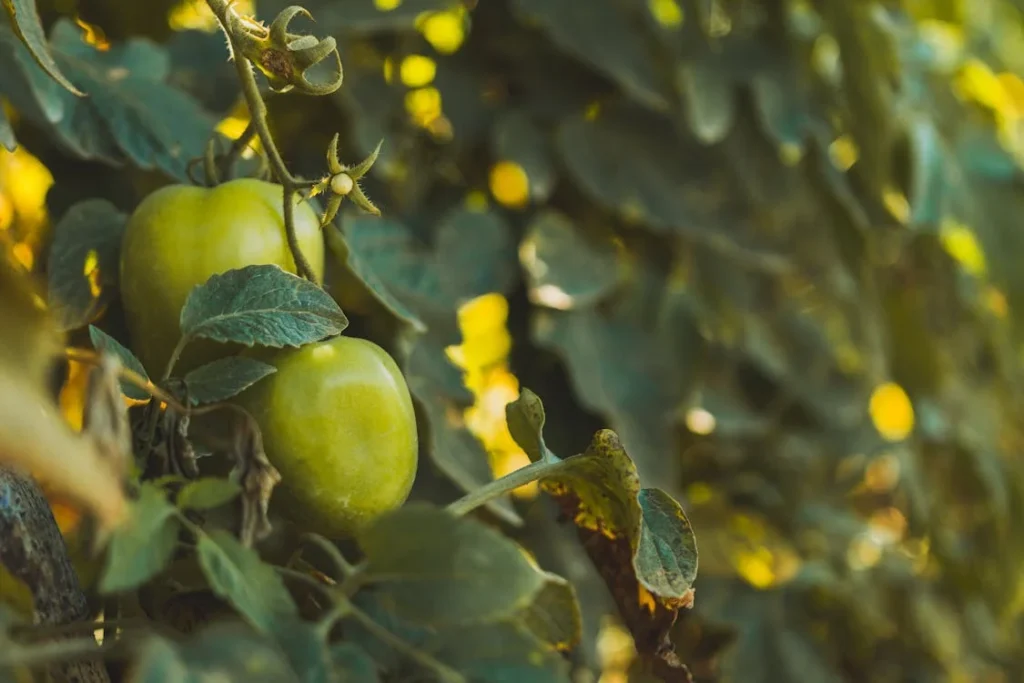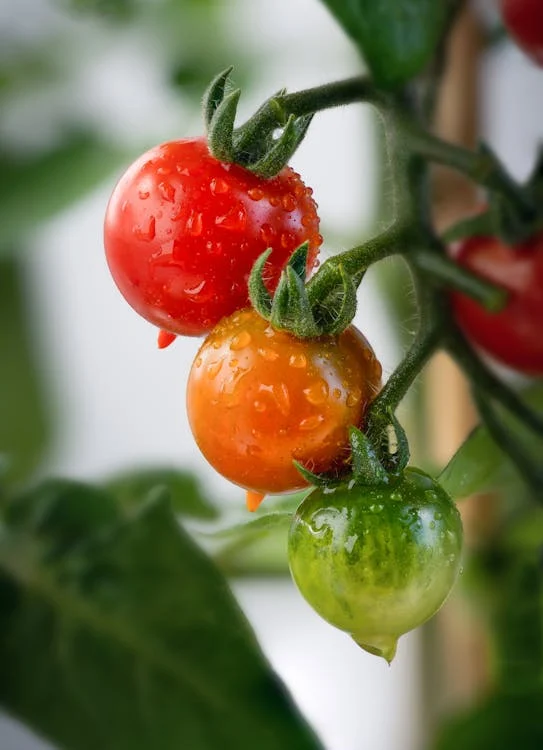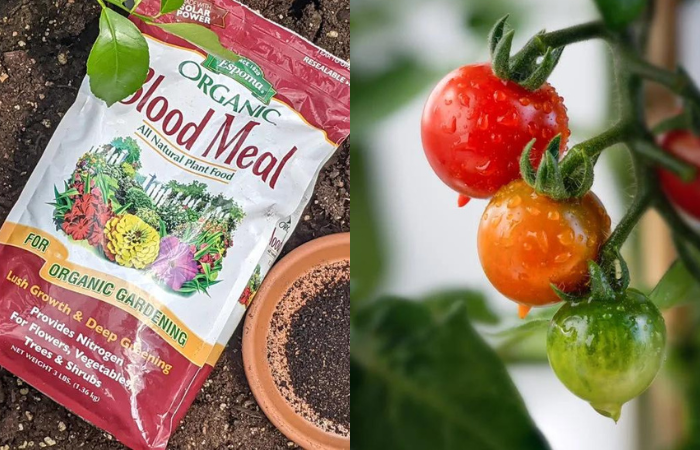Tomatoes are a favorite summer staple, gracing gardens and dinner tables across the globe. But these delicious fruits (yes, tomatoes are technically fruits!) require specific nutrients to thrive and produce a bountiful harvest. One popular option for feeding your tomato plants is blood meal, an organic fertilizer derived from dried animal blood. But is blood meal truly good for tomatoes, and if so, how do you use it effectively?
This article reveals everything you need to know about blood meal and its impact on tomato plants. We’ll explore the benefits of blood meal, potential drawbacks to consider, and the ideal timing and methods for application.
Benefits of Blood Meal for Tomatoes
Blood meal boasts several key advantages for tomato plants, making it a popular choice among organic gardeners. Here’s why you might consider incorporating it into your tomato-growing regimen.
A. Nitrogen Powerhouse:
Nitrogen is a crucial building block for healthy plant growth. It promotes strong stems and lush foliage, both essential for your tomato plants. Blood meal shines as a rich source of slow-release nitrogen. Unlike synthetic fertilizers, blood meal releases its nitrogen gradually over time, providing a consistent supply throughout the growing season. This helps your tomato plants grow steadily and vigorously, setting the stage for abundant fruit production.
B. Potential Pest Repellent
While more research is needed, some gardeners swear by blood meal’s ability to deter certain pests. The strong odor of blood meal may be unappealing to some insects, potentially offering a layer of protection for your precious tomatoes. However, it’s important to note that blood meal isn’ a guaranteed pest control solution. Combining it with other organic pest control methods for a well-rounded approach is recommended.
Drawbacks and Considerations of Blood Meal
Before rushing out to buy blood meal, let’s address some potential drawbacks to consider.
A. Burning Potential:
Blood meal packs a powerful nitrogen punch, and too much of a good thing can be detrimental. Over-applying blood meal, especially around delicate seedlings, can burn the plants. Always follow the recommended application rates on the specific blood meal product you choose. Remember, “less is more” when it comes to blood meal.
B. Attracting Unwanted Guests:
The same strong odor that may deter some pests can attract others. Blood meal’s rich scent might lure in unwanted animals like rodents or scavengers. If this is a concern, consider alternative organic fertilizers or implement deterrents to keep these critters at bay.
C. Suitability for Your Soil:
Blood meal can make your soil slightly more acidic. While tomatoes can tolerate a slightly acidic environment, some plants prefer more neutral soil. If you’re unsure about your soil’s pH level, a simple soil test can help you determine if blood meal is the right choice for your garden.

When to Use Blood Meal for Tomatoes
Timing is key when it comes to applying blood meal to your tomato plants. Let’s explore the optimal application window.
A. Early Spring Awakening:
The best time to introduce blood meal to your tomato plants is in early spring, just as they begin showing signs of new growth. During this vegetative stage, your tomato plants are focusing on developing strong stems and healthy foliage. The slow-release nitrogen from blood meal provides the perfect fuel for this critical growth phase, laying the foundation for future fruit production.
B. Reapplication (Optional):
Depending on your soil conditions and the specific needs of your tomato plants, you may consider a second application of blood meal later in the season. However, this is not always necessary. If your plants are thriving and producing healthy foliage, there may be no need for additional nitrogen. A good indicator of nitrogen deficiency is pale or yellowing leaves. If you observe this, a second application of blood meal, following the recommended rates, can be beneficial.
Remember, conducting a soil test before applying any fertilizer, including blood meal, is always a good practice. This will help you determine your soil’s existing nutrient levels and avoid over-fertilizing.
How to Use Blood Meal for Tomatoes: A Step-by-Step Guide
Now that you understand the benefits and considerations of blood meal, let’s delve into the practicalities of application.
A. Two Effective Methods:
There are two primary methods for applying blood meal to your tomato plants:
- At Planting Time: This is a great way to provide your young plants with a slow-release nitrogen boost from the start. Simply mix a recommended amount of blood meal (as specified on the product packaging) into the planting hole before placing your tomato plant.
- Side-dressing: This method is suitable for established tomato plants. Carefully sprinkle the recommended amount of blood meal around the base of the plant, maintaining a safe distance from the stem to avoid burning.
B. Maintaining a Safe Distance:
When side-dressing with blood meal, it’s crucial to maintain a safe distance between the product and the stem of your tomato plant. Blood meal’s concentrated nitrogen can scorch the delicate stems, hindering growth. As a general rule, aim to sprinkle the blood meal at least 4-6 inches away from the base of the plant.
C. Watering Thoroughly:
After applying blood meal, regardless of the chosen method, it’s essential to water your tomato plants thoroughly. This helps activate the nutrients in the blood meal and distribute them evenly through the soil, making them readily available for your plants to absorb.
D. Avoiding Overapplication:
Blood meal is potent, and even a small amount can go a long way. Always adhere to the recommended application rates on the specific product you’re using. Remember, it’s always better to start with a slightly lower amount and observe the response of your plants. You can always add more later if needed, but correcting damage caused by overapplication can be tricky.

E. Repeat Applications (if needed):
As mentioned earlier, a single application of blood meal in early spring might be sufficient for the entire growing season, especially if your soil is rich in nutrients. However, if your tomato plants start exhibiting signs of nitrogen deficiency (pale or yellowing leaves), a second application of blood meal, following the recommended rates and timing, can be beneficial.
F. Safety Precautions:
While blood meal is generally considered safe, it’s always wise to take some basic precautions when handling it. Wear gloves and a mask to avoid inhaling dust particles. Wash your hands thoroughly after handling the product.
Alternatives to Blood Meal for Tomatoes
If you’re hesitant about using blood meal for various reasons, there are several excellent alternative organic fertilizers that can provide your tomato plants with the nitrogen they need. Here are a few options to consider:
- Compost: This rich, nutrient-dense material is a fantastic all-around fertilizer for tomatoes. Compost provides a slow-release source of nitrogen along with other essential nutrients, promoting healthy plant growth.
- Aged Manure: Aged manure from herbivores like cows or horses is another excellent source of organic nitrogen for tomatoes. However, ensure the manure is well-aged to avoid burning your plants. Fresh manure can be too concentrated and contain harmful pathogens.
- Feather Meal: This organic fertilizer, derived from processed poultry feathers, is a slow-release source of nitrogen and other beneficial nutrients, making it a good alternative to blood meal.
- Fish Emulsion: While not strictly a nitrogen source, fish emulsion is a liquid fertilizer rich in phosphorus and some nitrogen. It can be used as a foliar spray or diluted and applied around the base of tomato plants to provide a quick nutritional boost.
Remember: When choosing an alternative to blood meal, it’s crucial to research the specific nutrient content and follow the recommended application rates for optimal results.
Additional Tips for Happy Tomatoes:
- Choose the Right Variety: Select tomato varieties suited to your climate and growing conditions. Research their specific needs for sunlight, spacing, and support.
- Sunlight is Key: Tomatoes are sun-loving plants. Ensure your tomato plants receive at least 6-8 hours of direct sunlight daily for optimal growth and fruit production.
- Regular Watering: Consistent and adequate watering is crucial for healthy tomato plants. Water deeply when the top inch of soil feels dry, avoiding waterlogging.
- Staking or Caging: Provide support for your tomato plants as they grow taller. Stakes, cages, or trellises can help prevent them from sprawling and protect the developing fruits.
- Mulching: Apply a layer of organic mulch around your tomato plants to retain moisture, suppress weeds, and regulate soil temperature.
Be sure to combine proper planting techniques, smart resource management (like using blood meal effectively), and attentive care to cultivate a thriving tomato patch and enjoy a delicious harvest throughout the season. Happy gardening!
The Verdict
Blood meal can be a valuable tool in your organic tomato-growing journey. Its slow-release nitrogen content provides a steady fuel source for healthy plant growth, potentially promoting strong stems, lush foliage, and eventually, abundant fruit production. However, remember to use it judiciously, following recommended application rates and timing to avoid potential drawbacks. By understanding the benefits and drawbacks of blood meal, you can make informed decisions about incorporating it into your tomato care routine.

